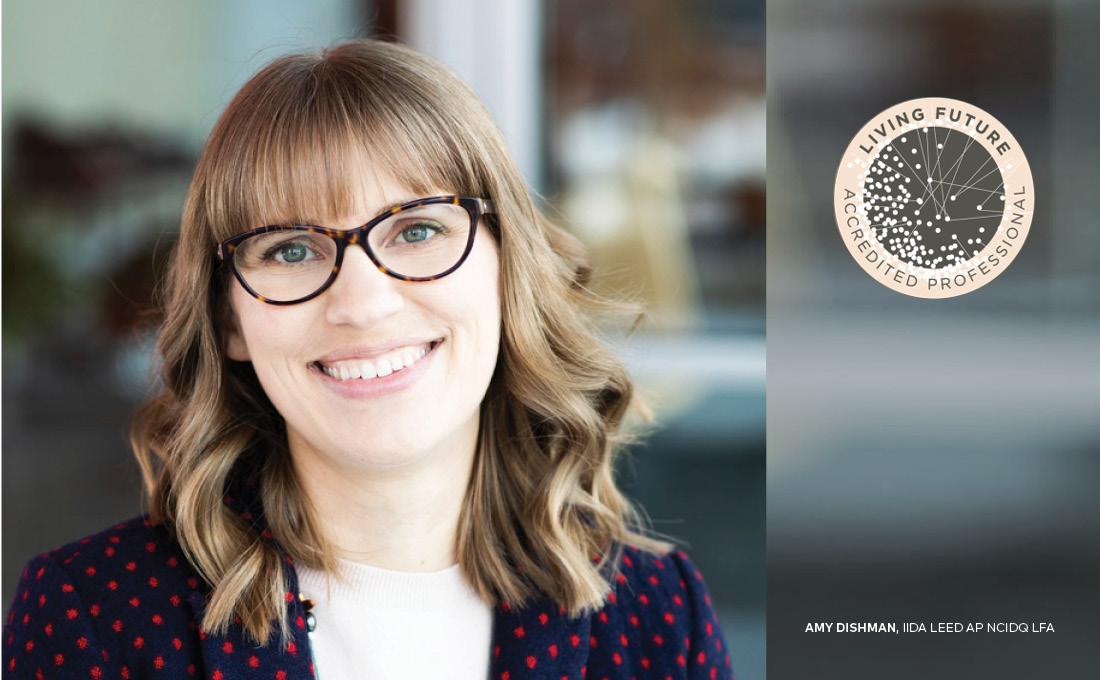
Amy Dishman, Living Future Accredited (LFA) Professional
Amy Dishman, IIDA, NCIDQ, LEED AP, LFA, recently earned her Living Future Accreditation (LFA), a professional credential that recognizes proficiency in the most ambitious, advanced, and holistic regenerative design standards. As BNIM’s latest LFA professional, Amy will continue to advance BNIM’s commitment to sustainable and regenerative design and provide guidance in the firm’s future pursuit of Living Building Challenge Certified projects, such as BNIM’s work on the Omega Center for Sustainable Living.
Amy is an Interior Designer at BNIM who has over 15 years of design experience in education, residential, commercial, healthcare, corporate, governmental, and civic projects. She is known for her commitment and passion for integrating sustainable practices into her design as well as outside of work, promoting health and well-being through non-toxic materials, quality daylighting, high-efficiency ventilation, biophilic strategies, and energy and water use reduction. After attending two Living Future Conferences and involvement with the International Living Future Institute over five years, Amy was motivated to pursue LFA to form a more holistic background and experience in sustainable and regenerative design.
To earn LFA, design professionals complete 36 hours of continuing education units (CEUs), including 20 Foundational LFA units and 16 General units in a range of specialized topics. Amy pursued general CEUs in certified wood and chemicals, biophilia, green neighborhoods, and city scale green infrastructure to grow her knowledge in these areas. For LEED and WELL accredited professionals, there is also eligibility to fast-track completion of general CEUs.
The LFA credential equips design professionals with the knowledge to become better problem solvers and to lead clients and project teams in the pursuit of sustainable solutions and building certification. Living Future looks at building performance as well as how a building impacts a community, focusing on the design of biophilic, healthy, beautiful, community-focused spaces that connect people to their environments. The Living Future certification program - Living Building Challenge - is organized into seven holistic performance areas: Place, Water, Energy, Health and Happiness, Materials, Equity, and Beauty.
Amy shares that the LFA credential teaches design professionals how to think about and approach, sustainable and regenerative design with a holistic lens. She encourages designers who are interested in sustainability and resiliency to look into pursuing Living Future Accreditation to develop the knowledge and tools needed to translate good intentions into action, ultimately creating better buildings and helping move the design industry forward.

